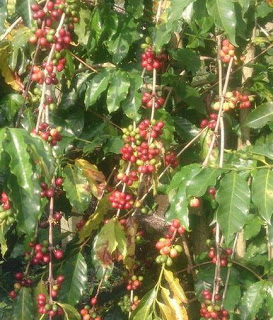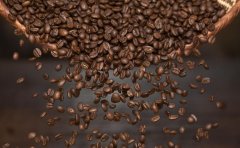The main components and aroma sources of coffee beans how many kinds of aroma of coffee and how to describe it?

Professional coffee knowledge exchange more coffee bean information please follow the coffee workshop (Wechat official account cafe_style)
What is the meaning of wet and dry aroma of coffee? seven factors affecting the flavor and aroma of raw beans of coffee
1. Main components
sucrose
In the process of baking, part of sucrose will be decomposed into acetic acid, formic acid, glycolic acid and lactic acid, while the other part of sucrose will go through caramelization reaction to form caramel, which increases the flavor of coffee.
Caffeine
It has a bitter taste and a high melting point of 237 ℃, so the caffeine of roasted coffee beans is almost preserved. Caffeine has a diuretic effect and helps to expel excess sodium ions from the body.
Chlorogenic acid
Chlorogenic acid in coffee helps stop weight gain, and about 50% of chlorogenic acid falls to quinic acid.
Quinic acid
The amount of quinic acid reached the peak after the second explosion with the degradation of chlorogenic acid.
Acid fat
There is acid in fat, although the degree does not vary according to the type.
Volatile fat
The aroma of coffee comes from the original.
Protein
It's a source of calories.
Fibre
When roasted, raw coffee beans are carbonized and combine with caramel to form the hue of coffee.
Mineral substance
There are a small amount of iron, lime, phosphorus and sodium carbonate.
Second, the source of aroma
The aroma of coffee comes from bleached wood acid, caffeic alcohol, slightly sour taste, while coffee alcohol breaks when it is slightly roasted, so raw coffee beans do not have this fragrance. If coffee beans boil for too long, coffee alcohol will volatilize, leaving only tannins, will form bitter coffee. Coffee itself does not have much nutrition, and most of the nutrition is to add sucrose and milk, but there is a kind of palmitine in coffee, which can be converted into nicotinic acid when baking coffee beans.
Nicotinic acid is vitamin B3, which helps to calm nerves and soothe mood, and is also beneficial to intestines, stomach and skin, but it is also easy to cause rough cutin and dry black spots. In 1926, Furfuryl mercaptanz-fuyul-methanethiol was identified as an important aroma compound in coffee roasting. The aroma components of coffee beans, such as sugars, amino acids, lipids, etc., can be said to be an important factor in considering the quality of coffee raw materials. Whether the processing conditions are appropriate or not has a decisive impact on the aroma. The volatile compounds in coffee are the main source of coffee aroma, and the existing conditions affect the aroma of coffee. This volatile substance is not volatile in raw coffee beans and needs to be roasted.
.
Important Notice :
前街咖啡 FrontStreet Coffee has moved to new addredd:
FrontStreet Coffee Address: 315,Donghua East Road,GuangZhou
Tel:020 38364473
- Prev

What are the seven factors that affect the aroma of coffee?
Professional coffee knowledge exchange more coffee bean information Please pay attention to the coffee workshop (Wechat official account cafe_style) what is the meaning of wet and dry coffee the seven factors that affect the flavor and aroma of coffee raw beans a cup of good coffee, 60% depends on the quality of raw beans. As a coffee practitioner, we should let go of the situation and learn as much as possible about the whole link of From Seed To Cup. this
- Next

History, appearance and extraction principle of ice drop coffee introduction to the characteristics of ice drop coffee
Professional coffee knowledge exchange more coffee bean information please follow the coffee workshop (Wechat official account cafe_style) cold extract, ice brew, ice drop, Japanese iced coffee, do you understand? Ice drop coffee, ice brewed coffee, also known as water drop coffee, English for Ice Drip coffee, is a way to make coffee drinks. Generally referred to as cold brewed coffee is soaked in room temperature water and ground.
Related
- Beginners will see the "Coffee pull flower" guide!
- What is the difference between ice blog purified milk and ordinary milk coffee?
- Why is the Philippines the largest producer of crops in Liberia?
- For coffee extraction, should the fine powder be retained?
- How does extracted espresso fill pressed powder? How much strength does it take to press the powder?
- How to make jasmine cold extract coffee? Is the jasmine + latte good?
- Will this little toy really make the coffee taste better? How does Lily Drip affect coffee extraction?
- Will the action of slapping the filter cup also affect coffee extraction?
- What's the difference between powder-to-water ratio and powder-to-liquid ratio?
- What is the Ethiopian local species? What does it have to do with Heirloom native species?

